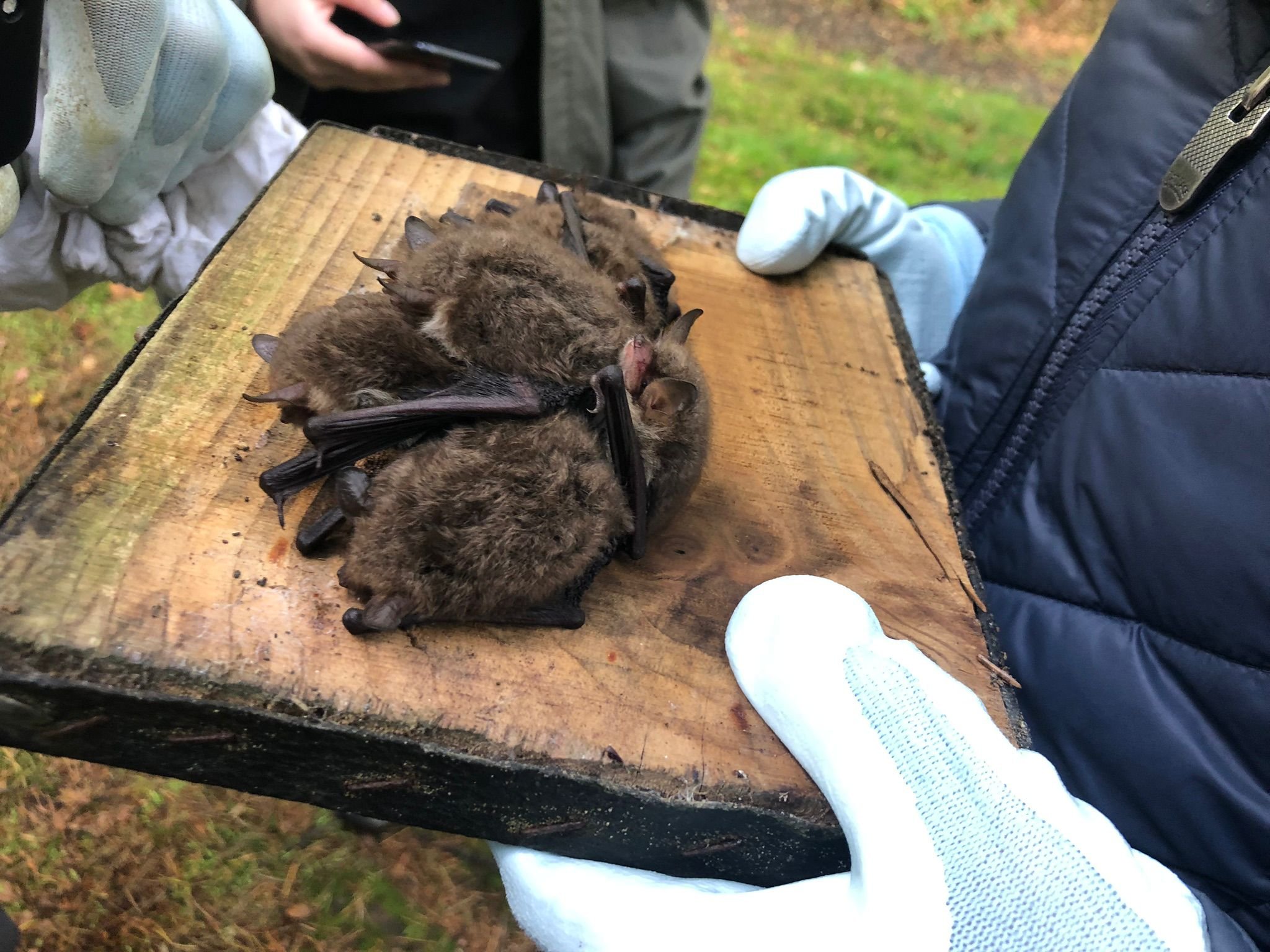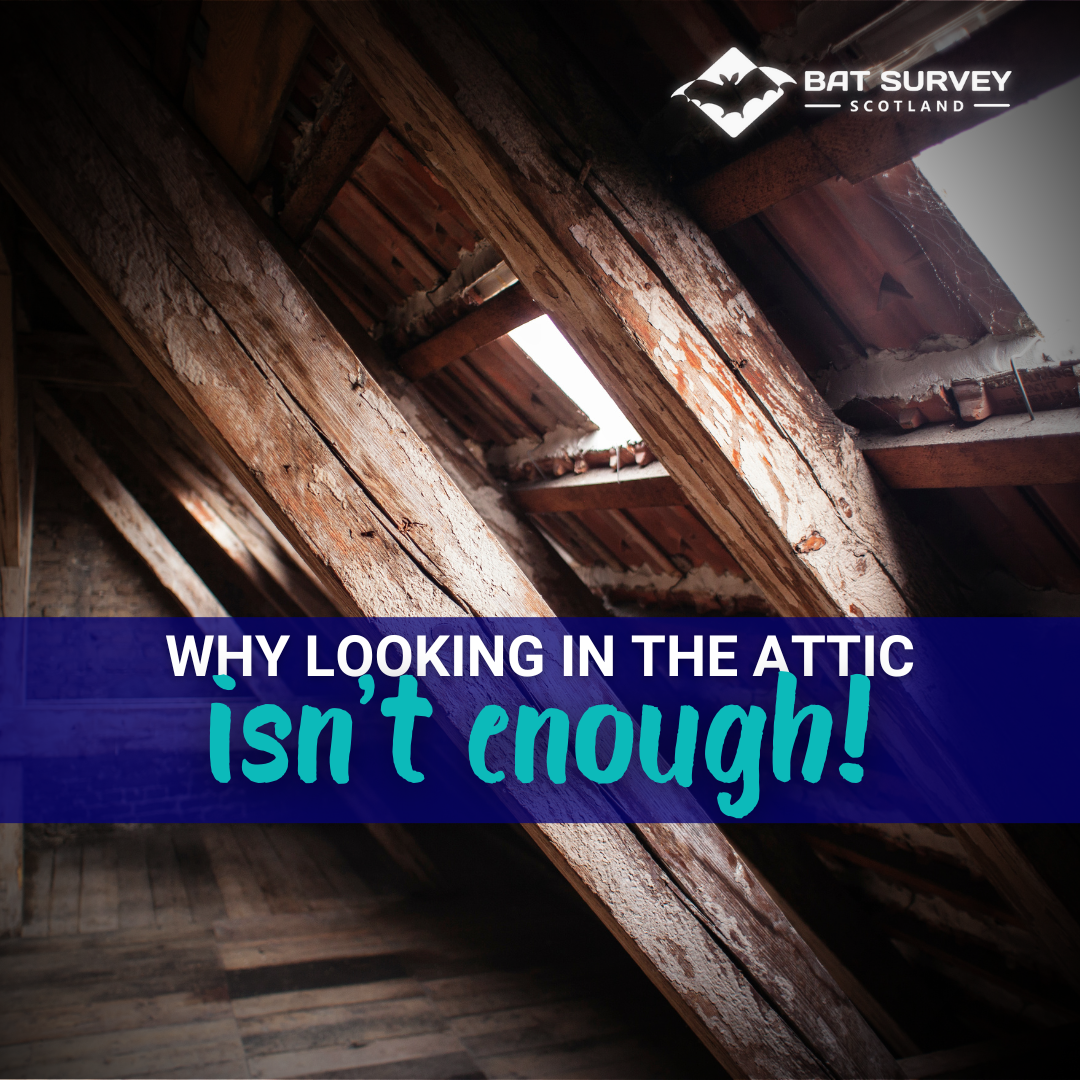Do Bats Stop Developments?
Bats are often seen as a potential roadblock for developments, demolitions, and renovations. Fortunately, this isn’t the case. With proper planning, and early consultations with a specialist ecologist, your project can proceed and stay compliant with UK law on bats.
The Presence of bats does not automatically end your development project - it means you need a licence!
In the UK, all bat species and their roosts are protected by law. This means it is illegal to:
Deliberately capture, injure or kill bats
Damage or destroy bat roosts
Deliberately disturb bats
You could receive fines of up to £5,000 per animal, even if you didn’t know the bats were there - that would be ‘reckless’ damage!
How to Get a Bat Licence
The easiest place to start is to get in touch with a specialist ecologist. If bat roosts are found on your development site, we can apply for a licence on your behalf from NatureScot (or Natural England). This licence allows us to move, exclude, or otherwise disturb a bat roost in a way that would otherwise be illegal.
To get a licence, your project needs to satisfy three legal tests:
#1 There is no satisfactory alternative
For many projects, we can work around bats. This could mean completing works at a time of year the bats aren’t present, allowing them to return next spring undisturbed, or adapting the project so the bats aren’t disturbed at all.
Where this isn’t possible, you will need to meet the other two criteria…
#2 The action will not be detrimental to the species favourable conservation status
For most bat roosts, simple mitigation strategies like bat tiles or bat boxes are enough to allow bats to continue roosting. For rarer species, maternity roosts, or hibernacula, we will need to create or maintain the same level of ecological function. That could mean:
Amending an attic conversion to maintain a separate space for the bats.
Creating a new attic space that can be used by the bats, above a laundry room or garage for example.
In rare instances, we have even helped with the creation of custom bat houses!
#3 The development is in best interests of the public
The creation of new houses, maintenance of existing buildings, and developments of businesses all benefit the public. Where bats are causing a problem for a home owner (for example, a maternity roost above a bedroom can get a bit noisy) it is in your best interest that this roost is moved to an alternative location!
Where to start?
We believe that the key to successful development in areas with any protected species is to engage with an ecologist as early as possible and plan with ecology in mind. By contacting us early, we can plan and complete your bat surveys as soon as possible and:
Identify roosts before they become an issue
Design appropriate mitigation measures
Complete your licence applications
Avoid costly delays or legal issues
Bats and development can coexist. With proper planning and expert guidance, we can ensure that your construction projects proceed smoothly while protecting our native wildlife.
For more information on bat surveys and how we can help with your development project, please don't hesitate to contact us.
If you need a bat survey (or think you might) get in touch with our team of specialist ecologists!
Or read more of our latest blogs:






